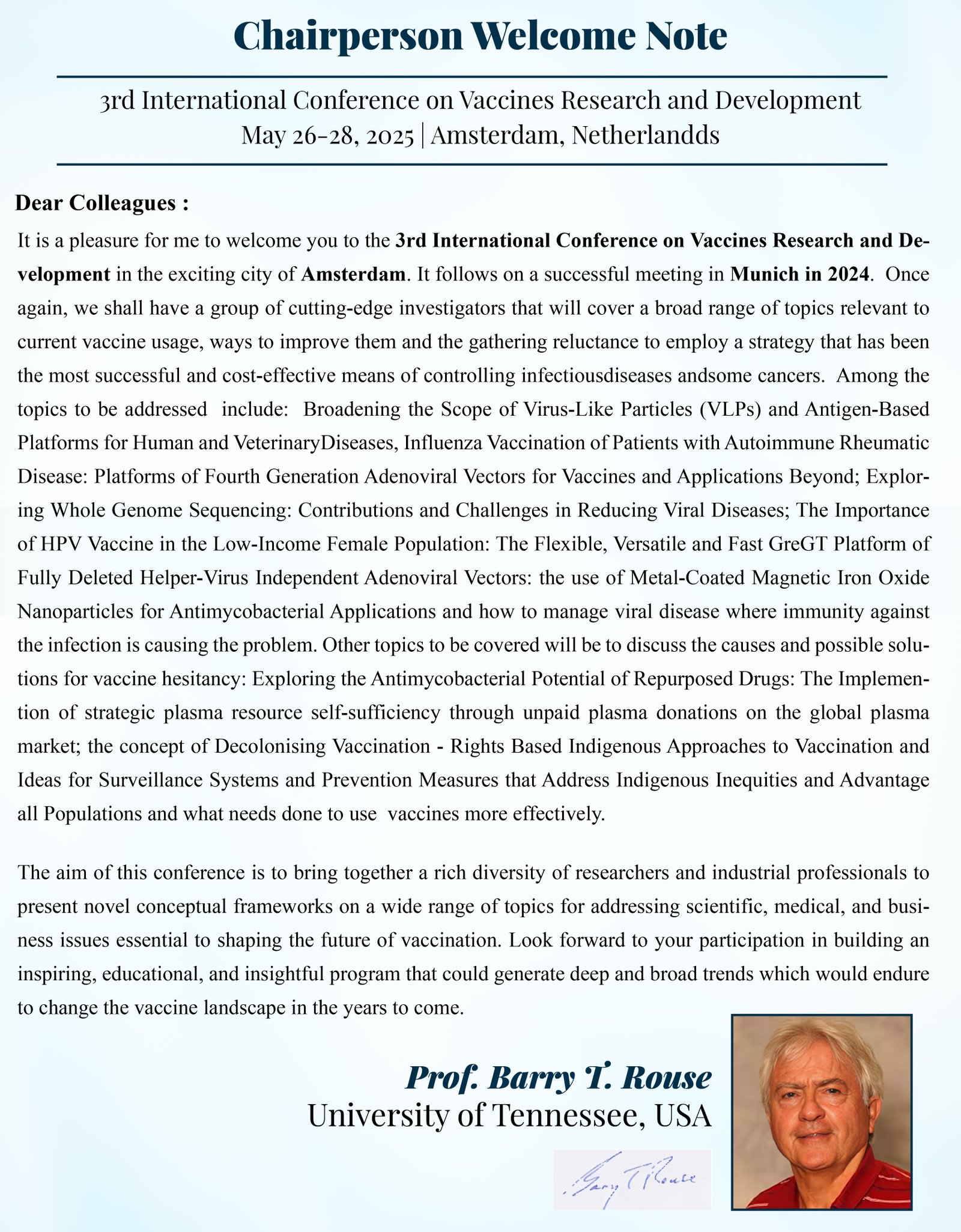Angus Dalgleish was the Foundation Professor of Oncology at the University of London at St George’s Medical School, now known as SGUL from 1992 – February 2024 and is now Emeritus. Since 2000 he has been the Principal of the Institute of Cancer Vaccines and Immunotherapy, a major charity that has funded clinical immunotherapy research.
He obtained his MBBS with intercalated Hons Degree in Anatomy from University College London and University College Hospital in 1974. Following registration, he spent a year as a flying doctor in Mount Isa, Australia, before being appointed as a training registrar in Princess Alexandra in Brisbane. He then specialised in oncology at the Queensland Radium Institute and spent two years in Sydney under Professor Martin Tattersall and Professor Tony Basten. He spent time at the Immunology Institute where, unusually, they looked after multiple myeloma and lymphoma patients and this is where he became acquainted with patients with Acquired Immune Deficiency and became interested in viruses and how they cause cancer. After fully qualifying as a FRACP he undertook a research project under Professor Robin Weiss, FRS, who was Director of the Institute of Cancer Research in London. It was here that he isolated HIV from patients and was the first to discover the association with the CD4 receptor, with major publications in Nature, Science and Cell. He was the first to link slim disease in Africa with HIV, as well as the aggressive form of Kaposi’s Sarcoma, both of which were major Lancet publications. He was then appointed a Senior Clinical Fellow and Honorary Consultant Physician and Oncologist at the MRC Clinical Research Centre in Harrow. Whilst there he developed a deep understanding of how HIV interacts with the immune system and proposed that the disease is caused by pan activation of the immune system, similar to that seen in chronic graft versus host and isolated a part of the virus next to the CD4 binding region, called C5. This has been proposed and taken up by Bionor as a first-class HIV vaccine candidate.
Whilst at Harrow and covering immunodeficiency and autoimmune disease he became aware of the overlooked powers of Thalidomide and championed its use in HIV and cancer. This led to collaboration with Celgene, who funded his research for nearly two decades, which ended up producing Revlimid and Pomalidomide. Revlimid is one of the most successful drugs in oncology and was one of the first to sell over $10 billion a year.
After being appointed to the Chair at St George’s he began applying the immunology learnt from HIV interactions to cancer and pioneered the development of immunotherapy in melanoma, with the use of a variety of vaccines and growth factors. The most effective vaccine that he developed for cancer was based on a heat-killed mycobacterium, known as M.vaccae. After showing that it was entirely effective in melanoma patients he persuaded a company called Immodulon to take this project on and superior strain, called obuense, was selected, which is now known as IMM-101. It has been shown in a number of cancer types to be effective, particularly in combination with chemotherapy and immunotherapy.
As a result of the large vaccine trial programme that he headed, it has emerged that vaccines tend to be only useful in patients with good Vitamin D3 levels and this revealed that the majority of patients with cancer had poor Vitamin D levels and he showed that supplementation increases the response to treatment. Colleagues in America have confirmed that patients with low Vitamin D levels have very poor response to any form of treatment and supplementing levels to high normal greatly improves response rates to all forms of treatment across a broad range of cancers.
The other thing that came out of this research is that people with high inflammatory background markers do not do as well as those who have normal levels. Research revealed that Naltrexone, a drug used to treat morphine and heroin misuse, when used at low doses, blocked a vital inflammatory pathway through TLR-9, which when stimulated produced Interleukin-6, which has been labelled ‘cancer growth factor’ in several publications.
During Covid, along with his Norwegian colleagues, he was the first to spot and report that the covid virus could not possibly have been a natural virus but had all the hallmarks of genetic engineering, which had already been published from the Wuhan lab and that it was clearly a laboratory leak. We also showed that the spike protein had 80% human homology and that any covid vaccine should omit these homologies. Unfortunately, in the race to develop the vaccine, this was not heeded and the predicted side effects of heart attacks, strokes and neurological diseases, such as transverse myelitis and Guillain-Barré syndrome have been significant side effects in the programme.
As covid has been associated with high levels of Interleukin-6, which determine the outcome of long covid, he was the first to use low dose Naltrexone to treat long covid and has found it to be probably the most important effective agent. This has been confirmed by studies in Australia and America.
Professor Dalgleish obtained the FRCP and FRACP by examination and was elected as a Fellow of the Royal College of Pathologists and the Academy of Medical Sciences based on his research work. He was awarded the Joshua Lederberg in 2011 for his work developing Lenalidomide. He has previously been a Visiting Professor at the Institute of Cancer Research and was made the Chiles Visiting Professor of Earle A Chiles Cancer Research Institute in 2017 in Portland, Oregan, U.S.A.









